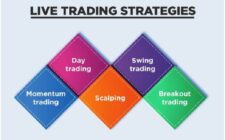In an increasingly interconnected global economy, investors in the UK with international exposure face the challenge of managing foreign exchange (FX) risk. FX exposure management is vital for protecting portfolios against adverse currency movements, which can significantly impact returns.
Understanding FX Exposure in Global Portfolios
Before exploring how to manage FX exposure, it’s essential to grasp what it entails in a global investing context. FX exposure represents the risk that changes in exchange rates will affect the value of foreign investments. This can occur in several ways. Transaction exposure emerges when investors or companies deal in foreign currencies—such as a UK investor holding assets in US dollars or a business exporting goods to the Eurozone—making them vulnerable to shifting currency values.
Translation exposure occurs when foreign-denominated assets, like overseas stocks or bonds, must be converted back into the investor’s home currency. These exchange rate fluctuations can significantly influence the final value of those assets. Economic exposure, or operating exposure, reflects the long-term effects of exchange rate movements on a company’s competitiveness and cash flows. It’s more strategic in nature, potentially reshaping market value when firms operate across multiple countries.
FX risk originates from several sources. Currency volatility is a major factor, driven by economic indicators, central bank decisions, and geopolitical events that cause unpredictable movements in exchange rates. Interest rate differentials between nations also play a role, prompting investors to move capital in search of better yields, which impacts currency values. Additionally, a country’s political and economic stability—or lack thereof—can rapidly shift investor sentiment and trigger significant currency moves.
Assessing FX Risk in Global Portfolios
Effectively managing FX risk begins with understanding how exposed your portfolio is to currency fluctuations. The makeup of your portfolio is a key factor—if a large share is invested in foreign assets like US equities or European bonds, your exposure to currency risk increases. The extent to which your investments are spread across different regions also influences how vulnerable your returns are to shifts in exchange rates.
Global economic and geopolitical developments can further heighten FX risk. Events such as political unrest, economic downturns, or landmark decisions like Brexit have all triggered sharp currency movements in the past. UK investors also need to monitor interest rates, inflation, and fiscal policies, as these factors can significantly sway currency valuations.
Additionally, currency volatility and inter-currency relationships must be taken into account. Some currencies—such as the US dollar and euro—tend to be more stable, while others, particularly those from emerging markets, are more volatile. Currencies often move in relation to each other, too.
Key Strategies for FX Exposure Management
After identifying the level of FX risk in a global portfolio, the next step is to apply strategies that help mitigate that exposure. One widely used approach is hedging, which involves setting up offsetting positions to protect against adverse currency movements. Forward contracts, for example, allow investors to lock in exchange rates for future transactions, providing certainty for upcoming foreign income or payments.
Currency swaps enable the exchange of cash flows in different currencies over time, offering a long-term solution for managing recurring foreign currency obligations. Meanwhile, currency options give investors the flexibility to exchange at a set rate if needed, offering downside protection without giving up potential gains if exchange rates move favourably.
Beyond hedging, currency diversification is another effective tactic. By investing in assets denominated in multiple currencies, investors can spread their exposure and reduce the risk that losses in one currency will drag down the overall portfolio. This also opens the door to benefiting from currency strength in different markets.
Another more adaptive strategy is dynamic hedging, which involves regularly adjusting hedge positions as market conditions evolve. Given the volatility of FX markets, relying on fixed hedges may not always provide adequate coverage. A dynamic approach allows investors to refine their protection over time, aligning hedging tactics with shifting currency trends and portfolio allocations.
Read this article for more insights into managing FX exposure and optimizing your global portfolio.
FX Exposure and Portfolio Performance
FX exposure can play a major role in shaping portfolio performance, making effective management critical to safeguarding investment value. Unhedged currency risk often introduces additional volatility, especially in portfolios heavily weighted with foreign-denominated assets. A sharp decline in a currency’s value can lead to unexpected losses, while favorable moves may enhance returns. Managing this exposure helps reduce such fluctuations and brings more consistency to performance.
To measure the success of FX risk strategies, investors often rely on risk-adjusted metrics like the Sharpe or Sortino ratio, which evaluate returns relative to the level of risk taken—including currency risk. However, hedging isn’t without cost. Instruments like forward contracts and options involve fees, and maintaining a dynamic hedge strategy can result in higher transaction expenses. As such, it’s important to strike a balance, ensuring the benefits of reduced risk outweigh the financial costs of hedging.
Conclusion
FX exposure management is a vital component of global portfolio management, especially for UK investors with international investments. By understanding the different types of FX risk, employing effective strategies such as hedging and diversification, and staying informed about market developments, investors can mitigate the negative impacts of currency fluctuations. To further enhance your FX risk management, it’s crucial to regularly evaluate your portfolio’s exposure and adjust strategies as needed.




